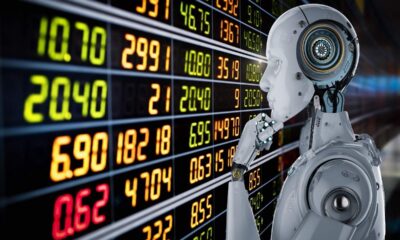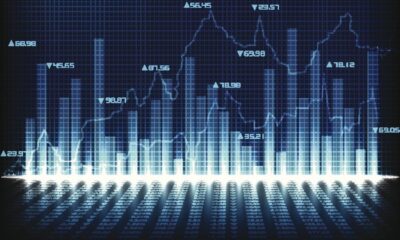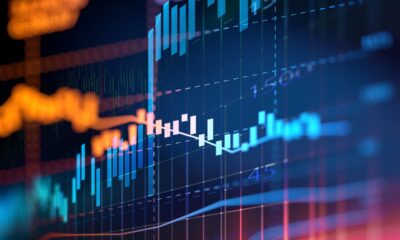I flera årtionden har fonder erbjudit professionell portföljförvaltning, diversifiering och bekvämlighet till investerare som saknar tid eller möjlighet att hantera egna portföljer lönsamt. Under de senaste åren har en ny sorts fonder uppträtt och erbjuder många av samma fördelar med traditionella öppna fonder med mycket större likviditet. Dessa fonder, så kallade börshandlade fonder (ETF), handlas på börser och kan köpas och säljas under dess öppettider, precis som aktierna kan. Ökning av populariteten för dessa medel har emellertid också skapat en hel del felaktiga uppgifter om ETFer. Denna artikel undersöker några av de vanliga missuppfattningar om ETFer och hur de fungerar.
Hävstångseffekt är alltid en bra sak
En del ETFer kan utnyttja hävstång i varierande grad för att uppnå avkastning som är direkt eller omvänd proportionellt större än vad som ligger till grund för det underliggande indexet, den sektor eller gruppen av värdepapper som de är baserade på. De flesta av dessa fonder används vanligen med en faktor på upp till tre, vilket kan förstärka vinsterna som läggs fram av de underliggande verktygen och ge stora, snabba vinster för investerare. Självklart fungerar hävstångseffekten båda sätten, och de som satsar fel kan drabbas av stora förluster.
Kostnaderna för att upprätthålla hävstångspositionerna i dessa fonder är också ganska stora i vissa fall. Portföljförvaltare är skyldiga att köpa positioner när priserna är höga och sälja när de är låga, för att balansera sina innehav vilket kan väsentligt erodera avkastningen som fonden har lagt ut på en relativt kort tid. Men kanske viktigast är att många hävstångsmedel helt enkelt inte lämnar avkastningar som stämmer överens med deras andel av hävstången över tidsperioder som är större än en dag på grund av effekten av sammansatt avkastning som matematiskt stör fonden att följa sitt index eller ett annat riktmärke.
Det finns en ETF för varje index
Många investerare tror att det finns en ETF tillgänglig för varje index eller sektor som existerar, men det är inte så. Det finns många index för värdepapper eller ekonomiska sektorer i mindre utvecklade länder och regioner som inte har några sektorsfonder baserade på dem (såsom CNX-tjänstesektorn eller Mid Cap-index i Indien). Vidare köper ETF inte alltid alla värdepapper som utgör ett index eller en sektor, särskilt om det består av flera tusen värdepapper, till exempel Wilshire 5000 Index. Fonder som följer index så här köper ofta en sampling av alla värdepapper i sektorn eller indexet och använder derivat som kan öka avkastningen som fonden lagt ut. På så sätt kan fonden spåra indexets eller benchmarkens avkastning på ett ekonomiskt sätt.
Börshandlade fonder spårar endast index
En annan populär missuppfattning om börshandlade fonder är att de bara spårar index. ETFer kan spåra sektorer, såsom teknik och hälso- och sjukvård, råvaror, fastigheter och ädelmetaller och valutor. Idag finns det få typer av tillgångar eller sektorer som inte har en ETF som täcker dem i någon form.
Börshandlade fonder har alltid lägre avgifter än ömsesidiga fonder
ETFs kan vanligtvis köpas och säljas för samma typ av provision som debiteras för aktier eller andra värdepapper. Av den anledningen kan de vara mycket billigare att köpa än traditionella fonder så länge som en stor del handlas. Till exempel kan en investering på 100 000 dollar göras i en ETF för en online-provision på $ 10, medan en traditionell fond skulle ta ut någonstans från 1 till 6% av tillgångarna. En ETF är dock inte bra val för små periodiska investeringar, till exempel ett $ 100 per månad dollar-kostnadsmedelprogram, där samma provision skulle betalas för varje inköp. ETF erbjuder inte breakpoint-försäljning som traditionella fonder.
ETFs är alltid passivt hanterade
Även om många ETF fortfarande liknar UIT, består de av en uppsättning värdepapper som periodiskt återställs. ETF-världen består av mer än bara SPDRS, Diamonds and Cubes. Aktivt förvaltade ETFer har visat sig de senaste åren och kommer sannolikt att fortsätta att få uppmärksamhet i framtiden.
Andra missuppfattningar och begränsningar
Fastän ETF: s likviditet och effektivitet är attraktiva, hävdar kritiker att de också undergräver det traditionella syftet med fonder som långfristiga placeringar genom att tillåta investerare att handla dem intradag som alla andra börsnoterade värdepapper. Investerare som måste betala en försäljningsavgift på 4 till 5 procent kommer att vara mycket mindre benägna att avveckla sina positioner när aktiekursen sjunker två veckor efter inköp än vad de kan ha om de bara var tvungna att betala en $ 10 eller $ 20 provision till sin online-mäklare. Kortsiktig handel utlöser också den skattelikviditet som finns i dessa instrument.
Vidare finns det tillfällen då ETF: s substansvärde kan variera med några procentenheter från den faktiska slutkursen på grund av ineffektiviteten i portföljen. Det har också spekulerats att börshandlade fonder har använts för att manipulera marknaden, och denna praxis kan ha bidragit till marknadssmältningen under 2008. Slutligen anser vissa analytiker att många ETF inte ger tillräcklig diversifiering per fond. Vissa medel tenderar att koncentrera sig kraftigt på ett litet antal aktier eller investera i ett ganska snävt segment av värdepapper, till exempel bioteknikaktier. Även om dessa fonder är användbara i vissa fall borde de inte användas av investerare som vill ha bred exponering mot marknaderna.
Poängen
ETFer erbjuder många fördelar jämfört med traditionella öppna fonder i många avseenden, såsom likviditet, skatteeffektivitet och låga avgifter och provisioner. Det finns dock en hel del felinformation som flyter kring dessa fonder. De täcker inte varje index och sektor, och det finns vissa begränsningar för effektiviteten och diversifieringen. Deras likviditet kan också uppmuntra kortvarig handel som kanske inte är lämplig för vissa investerare.

 Nyheter3 veckor sedan
Nyheter3 veckor sedan
 Nyheter6 dagar sedan
Nyheter6 dagar sedan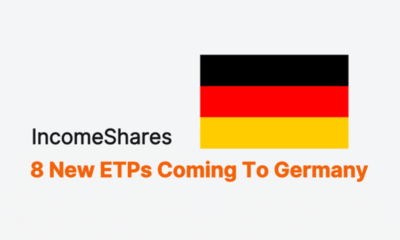
 Nyheter2 veckor sedan
Nyheter2 veckor sedan
 Nyheter2 veckor sedan
Nyheter2 veckor sedan
 Nyheter4 veckor sedan
Nyheter4 veckor sedan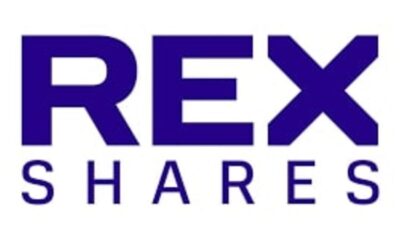
 Nyheter3 veckor sedan
Nyheter3 veckor sedan
 Nyheter2 dagar sedan
Nyheter2 dagar sedan
 Nyheter4 veckor sedan
Nyheter4 veckor sedan


